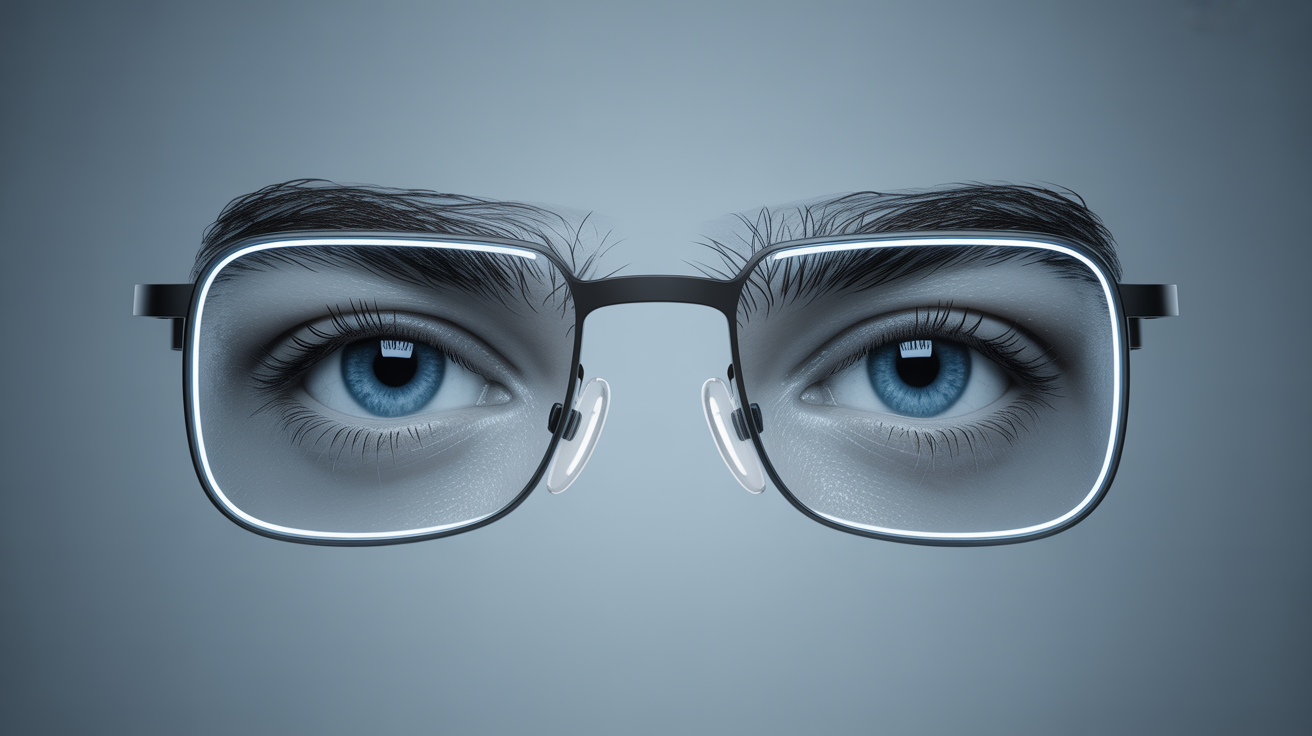By Futurist Thomas Frey
In 2025, a quiet revolution began among the 1%—not the financial elite, but the optical pioneers. Around one percent of people with vision problems stopped wearing prescription glasses. Not because of surgery, not because of LASIK, but because of something entirely new: AI-powered adaptive eyewear. These early adopters wore glasses with electrochromic lenses—microscopic layers that change their optical properties in milliseconds, dynamically adjusting focus based on what the wearer is looking at. Screen text two feet away? Instantly crisp. A road sign a hundred meters down the highway? Instantly refocused. No bifocals. No progressive lenses. No need to swap glasses. The experience was seamless, automatic, and profoundly liberating. Most early adopters described it the same way: “I forgot I even had vision problems.”
By 2040, the technology has matured—and prescription glasses as we once knew them are gone. The optical industry has shifted from static correction to dynamic enhancement. Instead of lenses that passively bend light, we now have adaptive optics—intelligent systems that actively optimize vision in real time.
Sixty-eight percent of the global population uses smart glasses that continuously calibrate to lighting conditions, distance, and environmental detail. Another twenty-eight percent use microelectronic contact lenses that perform the same function invisibly. The remaining few—artists, collectors, and nostalgia enthusiasts—keep old-fashioned glasses as artifacts of a slower, blurrier age.
Modern adaptive eyewear doesn’t just fix vision—it upgrades it. Night vision, zoom capability, augmented reality overlays, blue light filtering, and automatic sun protection are standard features. The user can zoom in on distant objects, read fine print in near darkness, or see perfectly under glare that once made driving dangerous. The eyewear learns from its wearer’s habits: detecting eye strain, anticipating fatigue, and making subtle corrections before the user even notices discomfort. Every blink is data. Every glance becomes a calibration signal.
The transformation goes beyond convenience—it’s a redefinition of sight itself. The phrase “I need new glasses, my prescription changed” has vanished from the cultural lexicon. Human vision used to be static; it deteriorated with age and required periodic correction. Now, your eyewear evolves with you. It measures your eye’s performance millions of times per day, adjusting for muscle fatigue, hydration, and even micro-fluctuations in the cornea. It compensates for these variations continuously. For the first time in history, people can have perfect vision from childhood through old age—no replacements, no upgrades, just evolving calibration.
Optometrists have not disappeared, but their role has transformed completely. They no longer measure prescriptions—they manage vision ecosystems. A modern optometrist’s office looks more like a data lab than a clinic. Eye doctors now serve as system calibrators, bio-optical engineers, and long-term health monitors. Their task is not to grind lenses but to optimize human-technology symbiosis. Eye health itself has improved dramatically—adaptive eyewear tracks early signs of glaucoma, macular degeneration, and diabetic retinopathy years before symptoms appear, alerting users and doctors instantly. Preventative care has become proactive vision management.
The economic transformation is equally profound. In 2020, the global eyewear market was worth roughly $140 billion, most of it built on the endless churn of new prescriptions, broken frames, and retail markups. By 2040, that industry has quadrupled in value—but the business model has inverted. Instead of one-time purchases, adaptive eyewear operates on subscription models. Consumers pay monthly fees for software updates, cloud calibration, and health monitoring services. The result: stable revenue for companies and constant improvement for users. The once-fragmented eyewear industry has merged with health tech, AI, and wearable computing—forming a new category known as neuro-optical systems.
The psychological shift is perhaps the most striking. Vision used to be something people accepted as fragile. Glasses symbolized aging, vulnerability, imperfection. But by 2040, sight has become a platform—an interface for cognition, creativity, and exploration. Adaptive eyewear can zoom in on distant galaxies, overlay historical data on buildings, or analyze facial micro-expressions during conversations. It’s not just vision correction—it’s augmented perception. A generation has grown up never experiencing blurry vision, never losing a contact lens, never feeling the frustration of squinting. Their baseline expectation of the world is perfect clarity.
Of course, ethical and social debates followed. Should children be given vision enhancements that exceed natural capability? Should competitive sports regulate players whose eyewear provides superhuman focus? And what happens when your “eyes” are also cameras, streaming your perspective to the cloud? Some countries have banned live recording features in public, while others have integrated them into law enforcement and journalism. As with all revolutions, perfection carries new forms of complexity.
But the trajectory is clear: the human experience of sight has been permanently rewritten. Just as eyeglasses democratized literacy in the 15th century, adaptive optics are democratizing superhuman perception in the 21st. And much like early glasses extended lifespans by improving survival and productivity, adaptive vision is extending quality of life by restoring confidence, safety, and independence.
Final Thoughts
The death of prescription eyeglasses marks more than the end of an industry—it marks the beginning of a new sensory age. Vision is no longer a biological limitation; it’s a software service. Humanity’s relationship with the visible world has become elastic, precise, and personalized. In a century defined by augmentation, the eyes have become the first truly upgraded organ.
Related Reading:


